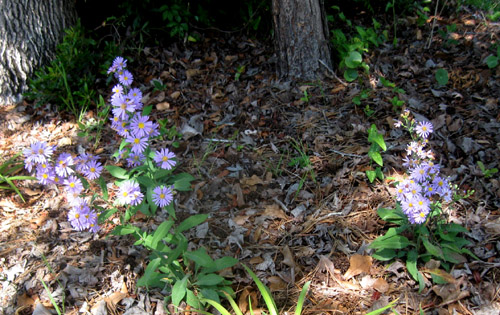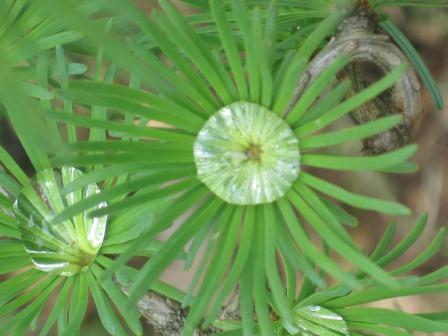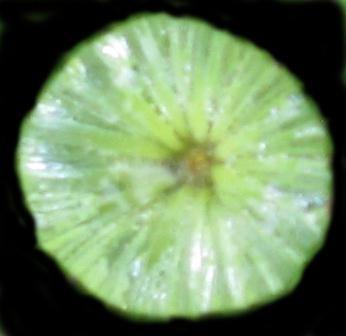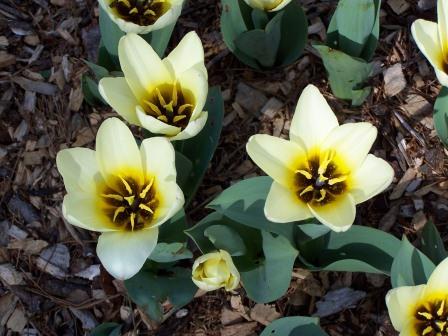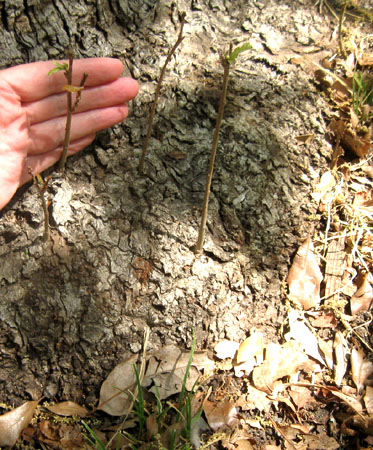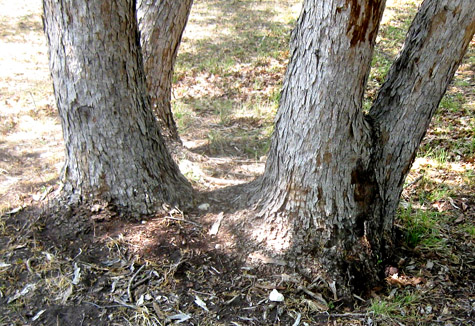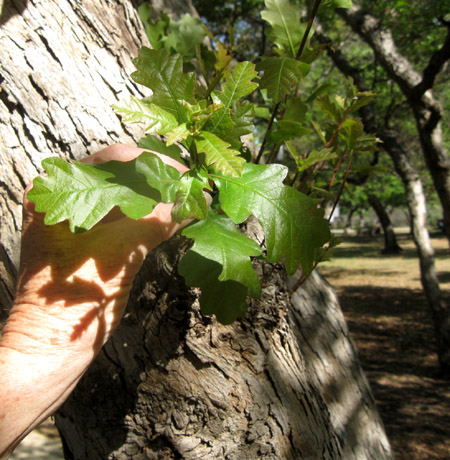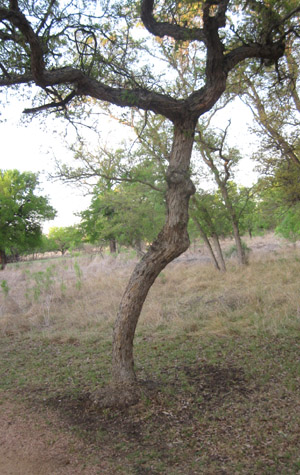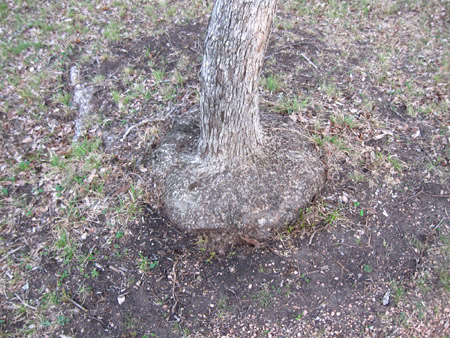
It’s almost May…and it’s still raining. Even for our normally wet spring climate, this has been an unusually soggy year. I’m also blaming the weather on my 3rd or 4th cold so far this year, which has knocked me flat for the last 6 days (which was why I had no Friday puzzle posted). So in between blowing my nose, hacking my lungs out, and generally feeling sorry for myself, I started looking over 10 years’ worth of photos of our home landscape.
You’ve seen bits and pieces of this before in some of my postings. But one of the spots I’m most proud of is the tiny east-facing side yard that originally contained lawn, a lilac, and a border of arborvitae. Within the first few years the lawn came out and plants started going in. In 2004 I’d installed some small rhododendron, a redbud (left foreground), and a whole lot of woodchips:
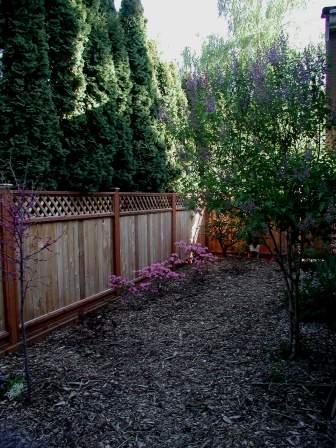
Since then we removed the lilac (it had been planted too close to the garage and was a powdery mildew magnet), put in an arbor and wisteria (on the right), and added a few more plants (ferns, bleeding hearts, various bulbs and tubers, etc.). Here it is two (2006) and five (2009) years later:
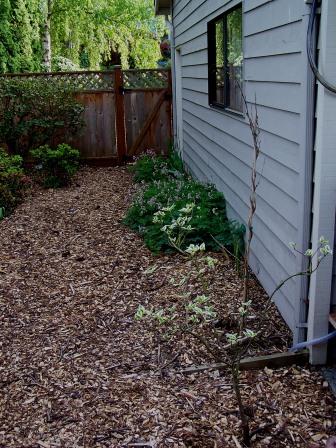
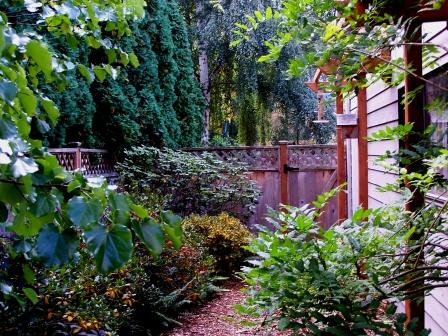
This year we’ll finish off the area with some flagstone pavers.
One of the main reasons I’m so pleased with this area is that it was inexpensive to redo and it established quickly. We bought the redbud, the wisteria, and the bulbs, but the rest were donations from friends’ gardens, or volunteers that popped up elsewhere in the yard, or plants that someone else wanted removed (like the larger rhody in the far left corner and the dogwood in the right foreground, 2006 photo). The chips were free; the flagstones were a major score from craigslist (free to whomever would pry them up and lug them out). All the purchased trees and shrubs were barerooted; and root-pruned if needed before planting. Upkeep is minimal except for a bit of pruning and spot watering during the hottest summer months; we’ve lost no plants other than the occasional bulb poaching by squirrels.
It’s just a little bitty sideyard…but I enjoy walking through it every time I’m outside, even in the rain.

